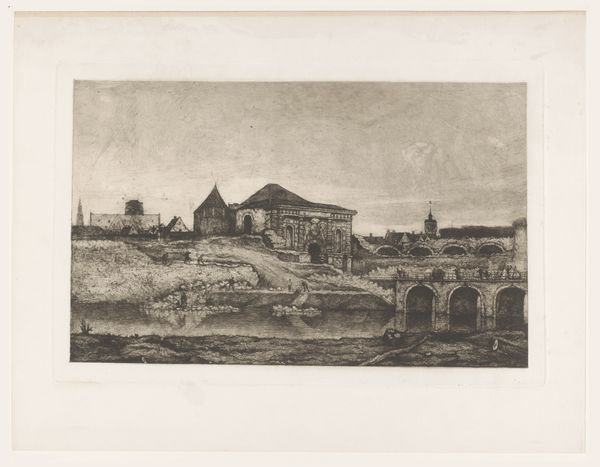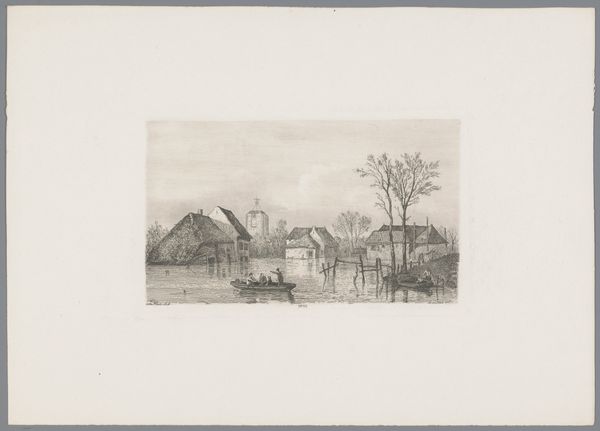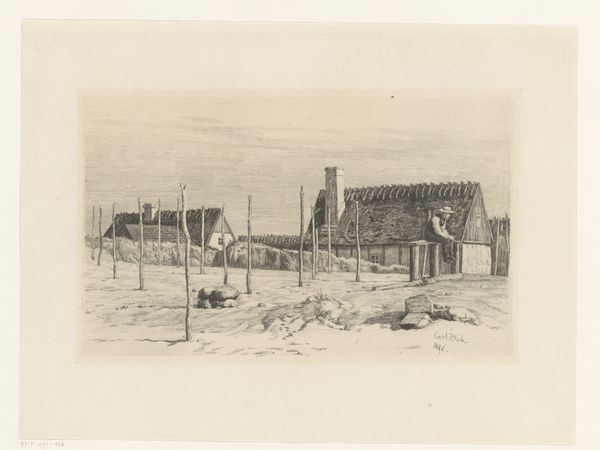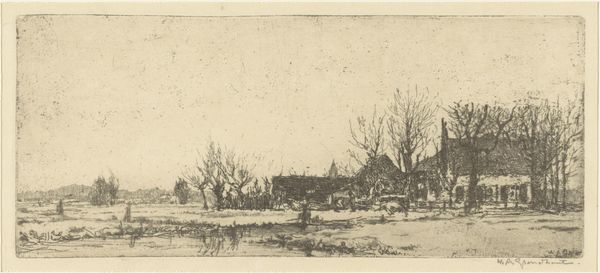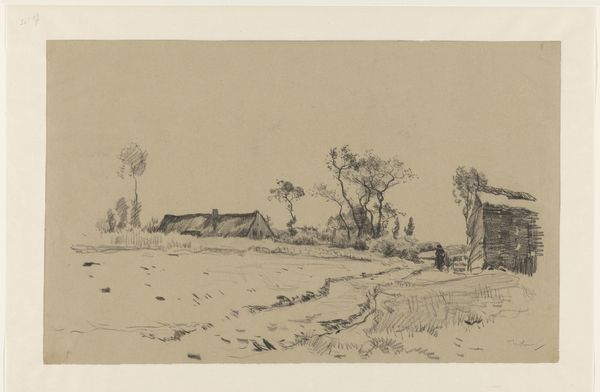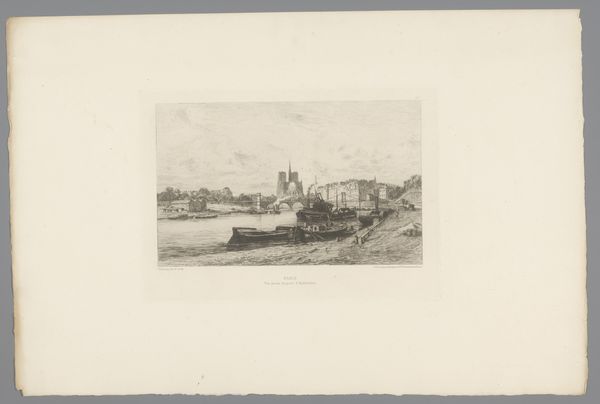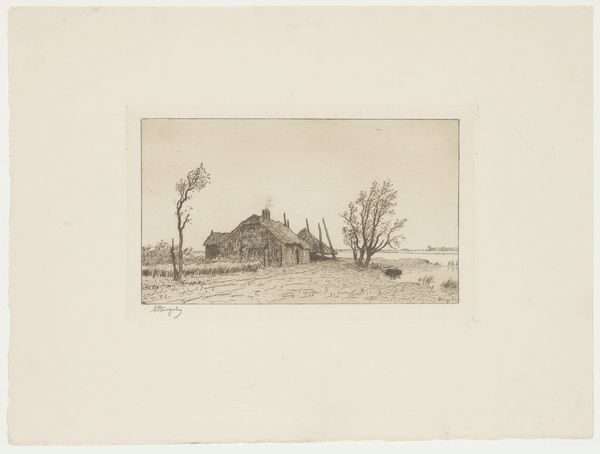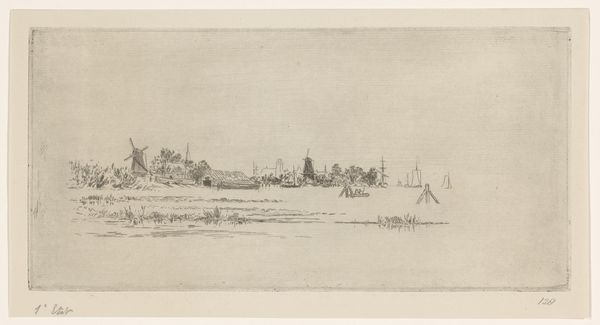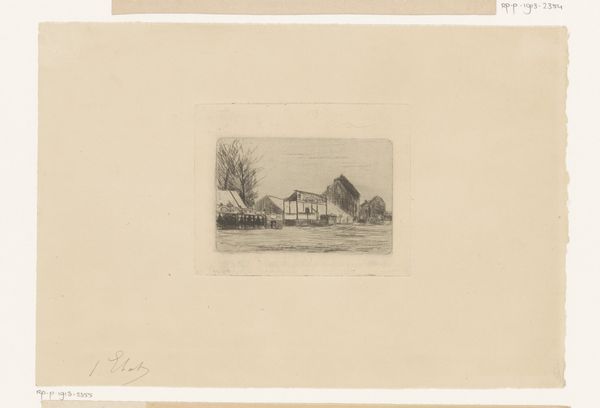
#
photo of handprinted image
#
aged paper
#
pale palette
#
photo restoration
#
light coloured
#
old engraving style
#
historical photography
#
old-timey
#
19th century
#
soft colour palette
Dimensions: height 496 mm, width 595 mm
Copyright: Rijks Museum: Open Domain
Curator: Let's consider "Stadszoom," an etching crafted in 1928 by Henk Henriët. The Rijksmuseum proudly includes it in its collection. Editor: Mmm, a quiet piece. I see what appears to be a cityscape—but softened, as if observed through fogged breath on a cold morning. Melancholy, almost. Curator: That resonates with its socio-political undertones. In the 1920s, rapid urban development often displaced agrarian communities, a theme mirrored here, portraying the city's encroachment. We are witness to the disruption and transformation inherent in modernization. Editor: I feel that keenly. It’s not just buildings, but disrupted ground, you know? Like freshly turned earth—or a freshly wounded landscape. The textures work in the etching, it all coalesces into a soft greyscale dream, or, perhaps, a disappearing memory. Curator: Henriët’s careful use of line weight guides our eye, inviting introspection on the tension between the natural and built environments. Notice how the sky presses down, an oppressive weight that emphasizes our historical dispossession from the earth. Editor: Yes! That sky! It's a tangible heaviness. And the detail—even tiny figures almost lost in the expanse. It all builds this story. Maybe about change, about a lost, quieter life. You can almost hear the wind blowing. Curator: Indeed. Consider, too, Henriët's artistic trajectory within the larger context of Dutch printmaking, reacting against romantic pastoralism, depicting urbanization's impact. Editor: In a way, it does become a commentary, just with light and shadow, doesn’t it? Thank you for bringing this poignant and understated gem to light. Curator: It’s crucial that we appreciate art's ability to reflect societal shifts and to foster crucial dialogues on identity, power, and spatial justice through art history. Editor: Absolutely. This makes one feel something vital. Thank you.
Comments
No comments
Be the first to comment and join the conversation on the ultimate creative platform.

